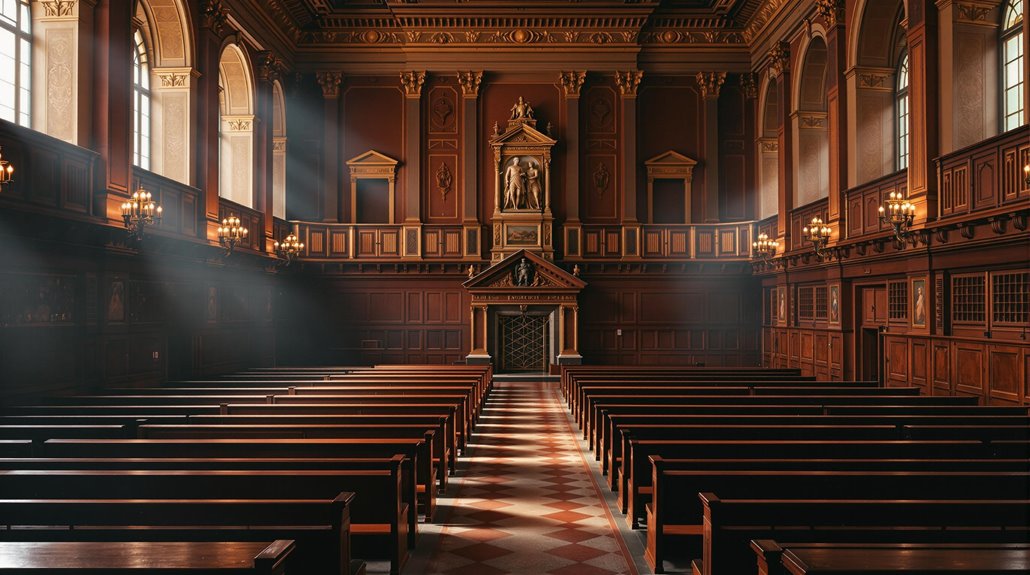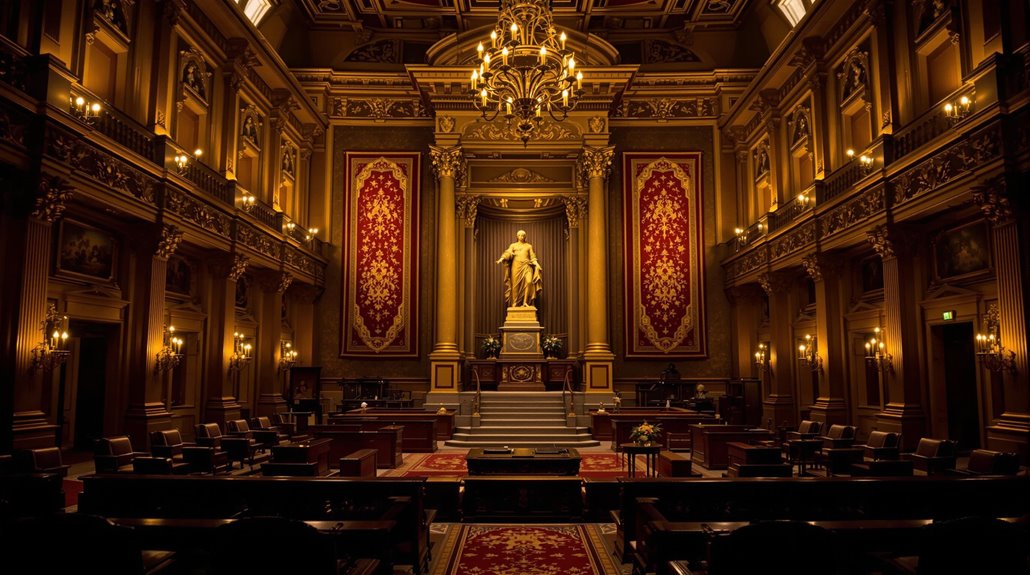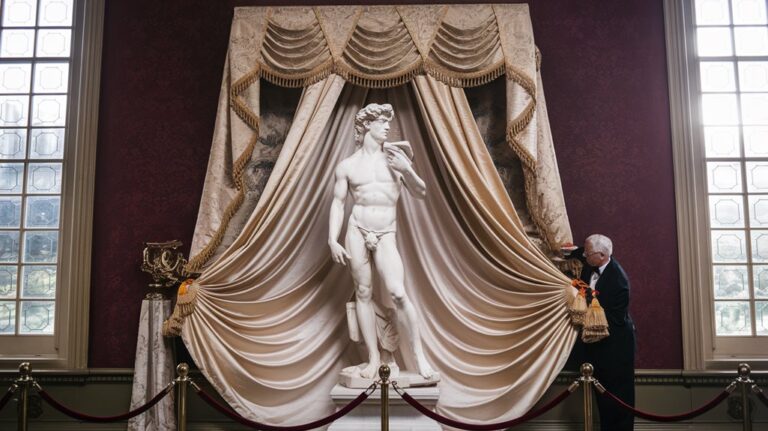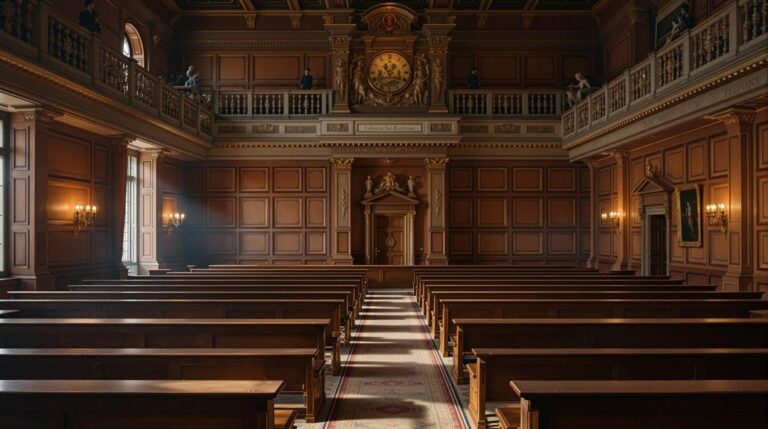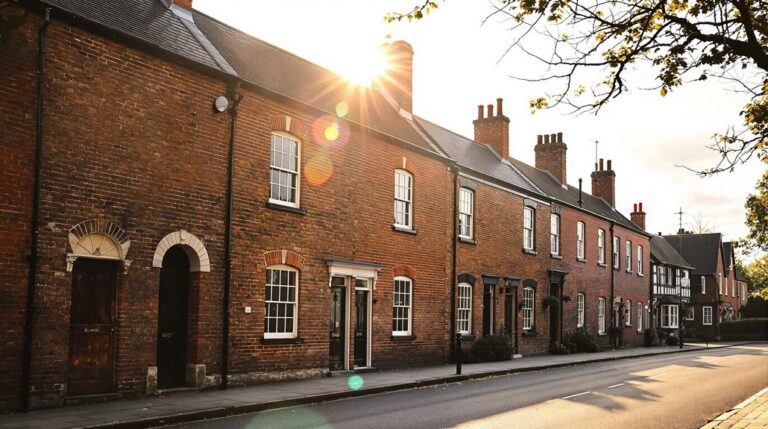How the French Revolution Sparked “Left” vs. “Right
You might be surprised to learn that the terms "left" and "right" in politics began with a seating arrangement in France's National Assembly of 1789. When you hear politicians labeled as leftists or right-wing today, they're actually drawing on a spatial metaphor that's over 230 years old. This seemingly simple architectural choice – where legislators chose to sit based on their loyalty to the king – would transform into one of the most enduring political frameworks in modern history.
The Birth of Political Seating in 1789
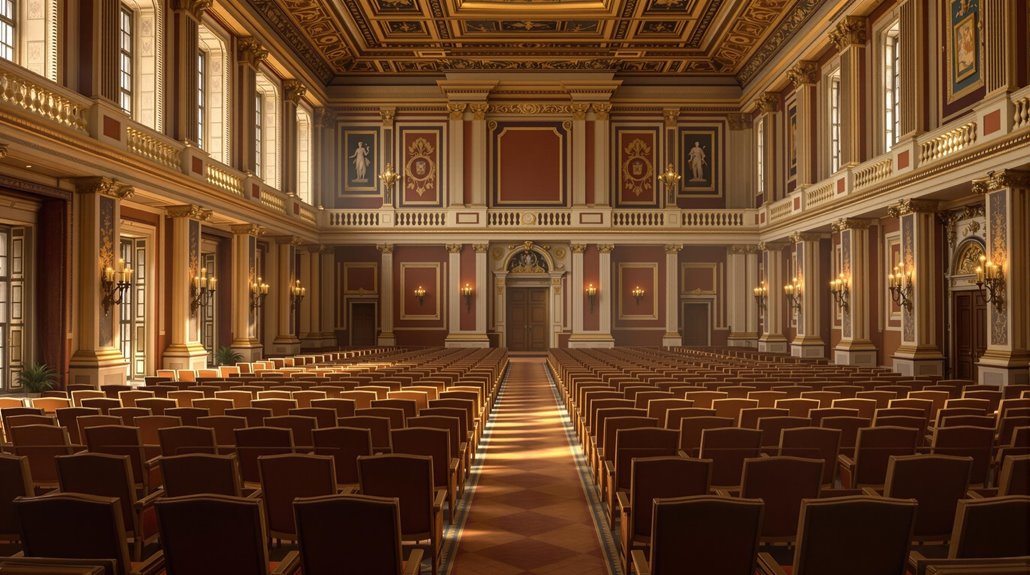
When the Estates-General convened in May 1789 to address France's financial crisis, no one could have predicted how its seating arrangements would shape modern political terminology.
In a cramped temporary hall behind the Menus-Plaisirs building, 1,200 deputies gathered with King Louis XVI presiding from beneath an ornate baldachin.
Initially, the seating arrangements followed traditional protocol, with clergy and nobility in designated areas while Third Estate deputies, dressed in black, sat in rows around the hall's edge.
But as the assembly transformed – first into the National Assembly on June 17, then the National Constituent Assembly by July – the deputies' seating patterns began shifting. The king's resistance peaked when he ordered the Salle des États closed on June 19, forcing deputies to find alternative meeting places.
You'd have noticed how ideological alignment gradually influenced where deputies chose to sit, with radicals clustering together and conservatives forming their own groups.
Each region had submitted their Cahiers de doléances outlining grievances about tax inequality and feudal dues, which further divided the seating based on how deputies viewed these complaints.
From Chamber Sides to Political Identity
The revolutionary dynamics intensified as each group staked out its position.
While the right wing opposed forming political factions, the left embraced collective action to advance their revolutionary ideals.
In the center, La Plaine members carefully balanced their commitments, sometimes siding with the left but occasionally supporting the right.
These divisions would ultimately shape political terminology far beyond France's borders.
The National Convention marked a historic shift when it established the First Republic in 1792.
Core Values That Defined Each Side
Ideology shaped the fundamental divide between left and right during the French Revolution, with each side embracing distinct values and visions for France's future.
The left championed liberty, equality, and social justice through radical reforms and wealth redistribution. They prioritized collective rights over individual interests, seeking to limit monarchical power while expanding social programs. Their principles were enshrined in The Declaration of Rights, which emphasized that all men are born free and equal.
The historical origins of this division can be traced to the summer of 1789 when representatives first chose their seating positions in the National Assembly.
The right stood in stark contrast, favoring strong authority and traditional hierarchies. They defended:
- The monarchy and aristocracy's privileged position
- An established church's role in society
- The protection of private property rights
You'll notice how these opposing philosophies created lasting tensions.
While the left pushed for dramatic changes to achieve their egalitarian goals, the right advocated for gradual reforms that would preserve existing social structures and traditional values.
Spreading Across Europe's Political Landscape
Ideas that first took root in France soon sparked a transformative wave across Europe, forever altering its political foundations. You'd find revolutionary movements emerging across borders as populations embraced the principles of liberty, equality, and fraternity.
These ideals challenged the established monarchies, leading frightened rulers to form defensive coalitions against the spread of democratic thought.
The Tennis Court Oath in 1789 set a powerful precedent for resistance against absolute monarchy.
As nationalist sentiments grew stronger, you could see the impact rippling through neighboring countries. While monarchs attempted to restore the old order through the Congress of Vienna, they couldn't contain the new political ideologies taking shape. Popular sovereignty and rights became central demands of citizens across the continent.
Liberalism, conservatism, and socialism emerged as competing visions for society's future. Even after Napoleon's defeat and the Bourbon restoration, these revolutionary principles continued to influence European politics, fueling ongoing struggles for democratic reform.
Modern Evolution of the Political Spectrum
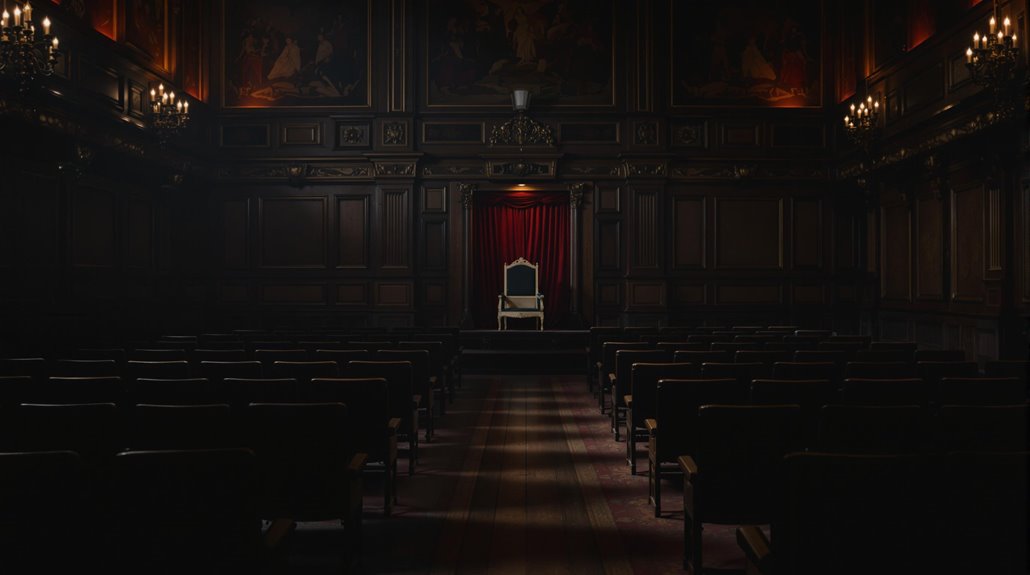
Since the 1970s, America's political landscape has undergone a dramatic transformation marked by increasing polarization and shrinking middle ground.
You'll notice stark ideological shifts as Democrats moved slightly left while Republicans shifted considerably rightward, with moderate voices dropping from 160 to just 24 representatives. The ideological overlap between the two parties completely disappeared after 2002.
The party polarization we see today stems from several key developments:
- Campaign finance reforms and court decisions like Citizens United reshaped political funding
- Social media's rise amplified extreme voices and contributed to events like January 6th
- Demographic changes transformed both parties, with Republicans gaining Southern strength while Democrats became more diverse. The Reagan administration era marked a pivotal moment in American conservatism that deepened the ideological divide between the parties.
These changes have fundamentally eliminated the political center where compromise once flourished, fundamentally altering how America's two-party system functions in the modern era.
Rethinking Left and Right in Today's World
Why do we still cling to an outdated left-right political spectrum that emerged from the French Revolution?
Today's complex political landscape demands a more sophisticated approach to political identity. With only 26% of Americans identifying as liberal and 32% as moderate, it's clear that traditional labels don't capture the full picture.
 political spectrum model was actually imported to America after World War I from Europe. The concept originated when seating arrangements in France's National Assembly divided supporters and opponents of the revolution.
political spectrum model was actually imported to America after World War I from Europe. The concept originated when seating arrangements in France's National Assembly divided supporters and opponents of the revolution.
You'll find that modern politics requires ideological flexibility and nuanced understanding.
Single-axis models oversimplify complex issues and fuel tribal divisions, making reasoned debate increasingly difficult.
Instead of forcing diverse viewpoints into rigid categories, consider embracing multidimensional frameworks that account for both social and economic positions.
These newer models can help you better understand policy nuances while moving beyond the "us vs. them" mentality that plagues current political discourse.

